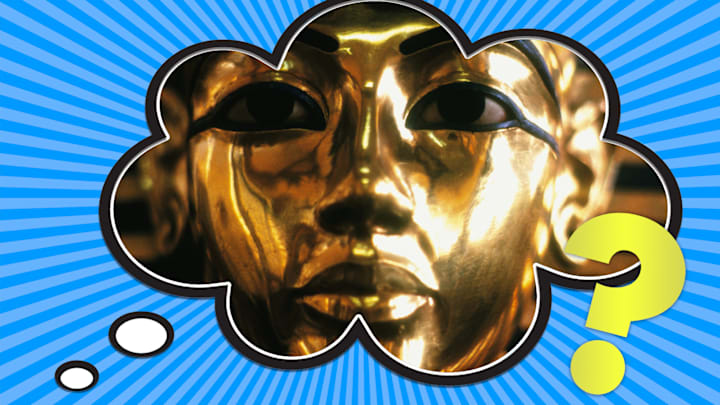When it comes to child kings, one name stands above the others: King Tut. Born circa 1343 BCE, Tutankhamun became the world’s most famous Egyptian pharaoh at the tender age of 9. While he ruled for a scant 10 years, his legacy lives on thanks to questions surrounding his reign, the discovery of his tomb in the early 20th century, and one enduring question: How did King Tut die?
Tut, the son of pharaoh Akhenaten, was not unpopular. Though his father had angered devout subjects by declaring fidelity to the sun god Aten and relocating the center of worship from Thebes to Amarna, his son walked those changes back. This, coupled with guidance from his uncle Ay, led subjects to believe Tut was a competent ruler who would grow into his own.
But around 1324 BCE, Tut’s life was cut short, with no definitive explanation as to why. Historians do know Tut was not in the best of health. He suffered from malaria; thanks to suspected inbreeding—his parents may have been related—Tut also had a cleft palate and a club foot, the latter of which hampered his mobility. (He was often depicted sitting down in Egyptian art.)
What really raised suspicion was when Tut’s tomb was discovered near Luxor, Egypt, by British archaeologist Howard Carter in 1922. Decades of research and examinations followed. Then, in 1968, scholars performed an X-ray of Tut’s body and discovered bone fragments in his head. This led to theories that Tut could have been murdered, with the fractured bone evidence of a violent encounter—perhaps, some thought, his uncle Ay wanted to be more than just an advisor and decided to bludgeon his young nephew. Or perhaps his wife (and possibly also his sister) Ankhesenamun wanted him done in.
That theory was cast aside in 2006 when a CT scan of his body conducted by a team of radiologists and scientists revealed the skull injury wasn’t a skull injury at all. Instead, fragments from his vertebrae were lodged near his head. Because they had no solidified embalming material on them, it likely happened postmortem—possibly as a result of mishandling by Carter's team.
If not murder, then what? Most likely, Tut died as a result of a femur fracture that also showed up on that 2006 scan of his remains. That injury was probably sustained during his life, as embalming resin was visualized over the edges of the broken bones. The fracture likely turned gangrenous and took Tut’s life.
What prompted the leg break is still open to speculation. One theory holds that it was a chariot race that ended in Tut crashing and suffering fatal wounds. Egyptian art inside his tomb depicted Tut in chariot sprints, though whether that was reflecting real events is unknown. Perhaps Tut, already hobbled by his club foot, tripped or had some other kind of accident, overwhelming a body already ailing from the malaria.
But no one knows for sure. Thus far, the mystery of Tut’s demise is a big question that has yet to find a definitive answer.
Have you got a Big Question you'd like us to answer? If so, let us know by emailing bigquestions@mentalfloss.com.
